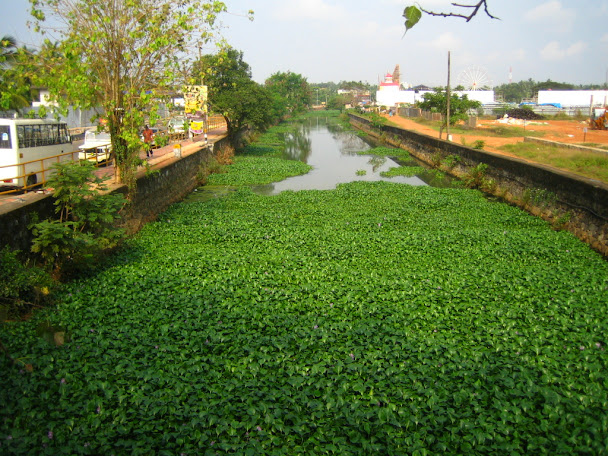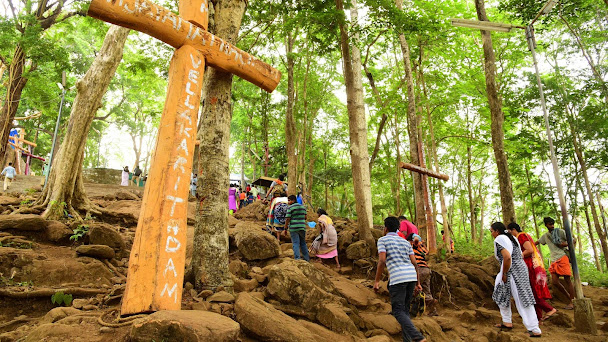Connolly Canal: A water network lost in time
In a land like Kerala the value of an inland water network is of utmost importance. The traditional & natural network made by the backwater, lakes & rivers is utilised in optimum by the people who live here. But one such unique water network was the handiwork of the British who believed in creating artificial canals flowing along the heart of the land. Such a well engineered water network is the Connolly Canal which passes through the heart of Kozhikode. The story of its construction & how it kept being an important part of people in Kozhikode is related to the enterprising collector of British East India Company H.V. Connolly.
Kozhikode & Malabar for centuries before the British was prosperous in trade & the Zamorins facilitated merchants with all the necessary infrastructure. The port of Kozhikode became an important point of trade for ships who travelled east. The prosperity of the region waned by the start of the 19th century & the control of the Zamorins over trade also faded with the arrival of the British. The British understood the importance of finding new ways to facilitate trade & look beyond the seas for internal trade. The fact that Kozhikode was now more like a fortress with the North controlled by the French, the east by Mysore & south by the Dutch made it difficult to conduct trade. The only way the British could move the goods was the sea but the closure of this route for one third of the year hampered productivity & roads took a long time to move goods. This difficulty could be overcome with an efficient water network & the idea to build such a long canal germinated long before Connolly.
Henry Valentine Connolly was appointed in 1840 & at the time Calicut was in a crisis as the most affluent merchants had started to lose their control of trade due to the absence of Arabs & Chinese who for centuries had come to the shores. In July 1845 F.C Cotton, a civil engineer with the Madras Presidency received a letter from Connolly detailing the importance of building a canal which according to him will do good for the company at the present time even if nothing good happens in the future. The canal would be first commissioned from Vadakara to Kozhikode which connects the Kuttiyadi river, Korapuzha & Chaliyar in a single thin stream. This long corridor would be used by small farmers to sell their produce directly to bigger merchants rather than depending on middlemen which was the norm then as exporting their goods directly by sea was not possible for smaller traders. The canal was further extended to the south in such a way that the stream flowed into the Periyar. This addition is possibly the most important & economical as it connected Kallai teak merchants with Tirur along the Kadalundi river creating a fertile plain. The fertile land helped in making a new ecosystem of mangroves which then took the route south and met the chlaiyar again & followed the route to Beypore which was an important port. The chaliyar then took the form of a small stream which was made artificially and passed through the west of the town of Tanur which was a hub for timber business. The canal then joined the river in its normal course & met the Tirurpuzha from where it travelled along the Bharathapuzha & flowed into the town of Ponnani where it drained to the biyyam canal. The canal then followed a natural flow of the river & passed along the Chettuva backwater water network & entered Thrissur. This is considered to be the longest natural canal in the system & it finally drained into the Periyar at Kodungallur. The extension of the canal till Kodungallur was completed under the supervision of collector Robinson who succeeded Connolly after his death in 1855.
It is important to understand the need of the canal in the 19th century & why if well preserved it can still be an important network. The land of Malabar was more of a trading hub which sold in bulk to big merchants. Though the place was a hub for big business, most of the products had to be brought from different parts, spices from Wayanad, agricultural products from the south, timber from the east forests & cloth from the north. The supply of these products was quite difficult as most came by the rugged road & took a long time to be delivered. A single long network of canal was the best way to monetise the trade. In 1844 Connolly also initiated the plantation of Teak trees in Nilambur which over the years would become the hub for timber needed by the artisans in places like Beypore to build large ships. The timber business in Malabar was big and transporting the timber along the road was not a profitable proposition. Connolly understood that timber is a commodity that can stay afloat & one could just guide large logs along water to the huge mills in Kallai & Feroke in a faster way. The timber merchants also understood this & decided to start their mills along the canal route. This plan of Connolly was such a lucrative one that the British after discussion with the engineers commissioned the project in 1846 & work started in 1848 under the supervision of Connolly. The work was done completely by human labour & the initial stage was completed by 1850 with the embankments built with dimension rocks & small bridges along the course for overboard travel. The canal instantly became a hub for business with many traders settling along the canal to facilitate their trade. Places like Eranhipalam, Nadakkavu, Arayidathupalam, Challapuram, Kallai prospered & Tirur became the warehouse. The traditional market of Valiangadi prospered further as large boats along the chaliyar could easily transport wheat & rice. The role of the Zamorins in all this was a mere facilitator in acquiring land to build the canal. It was always in the mind of Connolly that the most difficult part of this construction would be the acquisition of land for the project which was with big feudal landlords. This concern was not difficult to overcome as the Zamorins & landlords happily donated the land to Connolly on a condition that their agricultural lands would be allowed to use the water from the canal & that the British will make sure that the sea water does not enter the canal by building a bund wherever necessary. This condition was accepted by the British in principle (no written agreement was written) & it is said that the first mud bund over the canal was constructed in the current area of Puthiyara. This agreement is what resulted in the later trouble for the canal as the upkeep of the canal went into ruins for a long time which resulted in the canal narrowing & finally being reduced to only a small portion as today.
Collector Connolly is not just celebrated for his idea of the canal but before the canal he also commissioned the Teak Plantation in Nilambur which today is the oldest such plantation. The planting of saplings in 1844 and later commissioning of the canal can also be seen as a continuation of his vision to utilise the network for rapid transportation. When the canal was completed apart from the large boats carrying goods, passenger travel using small boats were also initiated which made it easier for people to travel between different towns. The small farmers & traders also could use the canal to better their business as it was a way to access the local markets. The people who lived around the canal also profited as the lands which were rendered unfertile for long could now be used for cultivation & this helped farmers. The fact that most of the land was received by Connolly in grant also reduced his earlier estimate of building the canal which saved a lot of money for the British EIC, but what made him popular among the people also resulted in his death by murder at the hands of the locals. It so happened that while being the collector of Malabar, the Islamic cleric of Mamburam by the name Fazal Pookoya Thangal was an influential member of the Mappila group who opposed the British & condemned the situation of his people in Malabar. In 1849 after the Manjeri revolt the British investigated the role of Thangal in the riots, it was found that his sermons were the reason for the revolt. The British decided to exile him as a punishment, Connolly proposed his exile from Malabar which was accepted but the government later exiled him to Arabia, The Mappilas of Malabar were agitated by this & found Connolly to be responsible for the exile of their leader & decided to execute him. For over 5 years the members planned his execution & on 11 September 1855 they entered his residence & hacked him to death with a sword. The perpetrators were given asylum by Malekel Mammu who himself was angry with Connolly for not clearing his arrears over a dispute in loan arrangements. The members of the group who hacked Connolly to death were later killed by the British soldiers & Mammu along with his wife were imprisoned. The death of Connolly was considered to be a big blow to the British as he was a good administrator. He was then succeeded by Robinson. The work on the extension of the canal was halted for some time after the death of Connolly but Robinson took over the work & completed the project. The Canal which flows along the valiyangadi to the Kallai river was named Robinson Canal & was the place selected by the later collector William Logan to construct the current Kozhikode railway station. H.V Connolly was given a state funeral & his body was cremated in a garden near the beach now called Connolly park.
The usage of local prisoners from the jails also was a way to provide employment for the youth & apart from reducing the cost of building the canal, his ability to improve the economic situation of all in Malabar is the vision which helped Connolly achieve this feat. Today the canal is just a small water body that flows along the heart of Kozhikode, free flowing in some places, jammed with water hyacinths in some places, vanished in some places & completely disappeared after a certain length. The canal is part of the heritage of Malabar & one can certainly try to keep the last remaining channel of the impressive water network alive.




Comments
Post a Comment